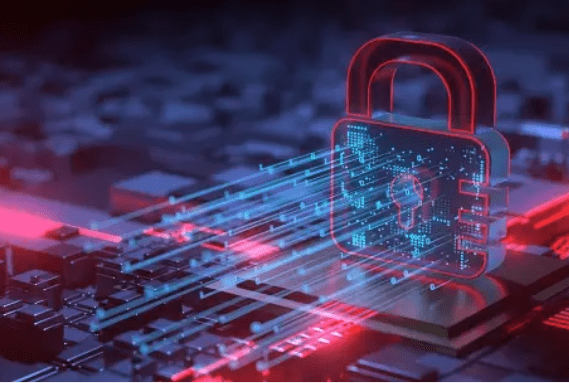
Authentication and authorization systems that prioritize identity are the key to protecting sensitive information from cybercriminals. Adding layers of security like zero trust and just-in-time privileged access reduces the number of unauthorized access points in your network.
Secure onboarding and offboarding are also critical to reducing the risk of data breaches. Without these controls, departing employees can take corporate data or abuse legitimate access.
Prevent the breach in the first place
Ensure you adhere to best practices to stop a breach before it happens.
Identity security breaches can result from various reasons: human error, loss or theft, malware, ransomware, phishing, and other targeted cyberattacks. They can also occur due to a vulnerability or flaw in the infrastructure.
The most common causes of breaches are an accidental event or a malicious act by an insider, such as an employee who accidentally views or shares information without proper authorization or a departing employee who takes the data to their new job. Secure onboarding and offboarding processes can help reduce these risks by limiting access for new hires and ensuring that departing employees don’t take corporate data with them.
Once a breach has occurred, you must identify the impacted data and the type of information that was seen or stolen. Then you can investigate and fix the issue that caused the breach. This step is crucial, as it helps minimize the breach’s impact on affected parties.
Identify the breach
Whether a cyberattack or human error, a breach is difficult to mitigate without detailed context. A detailed data forensics process can help uncover the root cause of the breach and prevent it from happening again.
Consider hiring a forensics team with experience in investigating breaches, as they can capture forensic images of affected systems, collect and analyze evidence, and identify remediation steps. They can also help you determine how widespread the breach is and what data types were stolen.
Identity-related breaches continue to be the number one source of cybersecurity incidents. The 2023 Trends in securing digital identities report found that 84% of organizations experienced an identity-based breach, up from 68% in 2017. The culprit: stolen identity credentials.
Attackers use these compromised credentials to access sensitive data and steal money or services. For example, the Equifax breach 2017 involved 145 million Americans’ names, addresses, and social security numbers. This information was sold to data brokers for advertising and used by thieves in identity theft schemes. Visibility into unmanaged applications (or shadow IT) is critical to identifying these risks and stopping attacks that rely on stolen identities.
Notify the affected parties
When a breach is discovered, the affected parties need to be notified. If necessary, it includes the individuals whose PII was exposed and law enforcement agencies.
Individuals need to be notified of the breach as soon as reasonably possible, so they can take steps to protect themselves and prevent further harm. It should include instructions on changing passwords and PINs to online accounts, including credit cards. Affected individuals should also be encouraged to contact their financial institution if they suspect fraud or identity theft.
If a breach impacts people in more than one State or jurisdiction, a covered entity must also notify the media in those areas. This notice should be provided without unreasonable delay and include the same information as in the individual notifications. In addition, covered entities must provide affected individuals with a toll-free phone number they can use to ask questions about the breach. Additionally, covered entities should anticipate the most common questions and put answers to them on their website. It can save time and resources in the breach’s aftermath.
Remediate the breach
After a breach, the company must take steps to remediate the situation. It may include reevaluating security policies and making changes, retraining employees, and updating access controls to prevent the incident from happening again.
In addition, the company should ensure all physical areas related to the breach are secure and that the forensic team can get into those locations. It should also reevaluate services and suppliers, including their access to personal information.
The company should also revoke privileges from accounts used in the attack. It is significant for the accounts of those whose information was exposed. It can help them avoid identity theft and fraud in the future.
A good cybersecurity practice is to rotate passwords and use different ones for each account. It can reduce the risk of hacking if an attacker gets initial access through stolen credentials. However, it’s important to note that if an attacker has privileged account credentials, they can still move laterally within the system to gain access to everything. Identity-based security controls like least privilege can minimize lateral movement and slow an attacker down.
Prepare for the future
Identity security must be a priority for all businesses. Whether they are a large corporation with thousands of employees or a small business that needs to protect its data and systems, a data breach can be devastating. It can lead to lost revenue, loss of customers, and damage to a company’s reputation.
In many cases, breaches are caused by identity-related attacks. Attackers target user credentials to gain access to networks and systems. An effective identity and access management (IAM) system can help minimize the risk of these attacks by providing granular authorization close to systems, whether on-premise or in the cloud.
Additionally, IAM solutions should provide deep visibility into devices, endpoints, identities, and users. It can help identify toxic combinations, credential exposures, and identity exploit chains. It also helps detect and stop identity-driven attacks, even when they have bypassed the network perimeter. It is possible through a Zero Trust architecture that secures identities, apps, and systems near the threat surface. It can also ensure that the right people have the access they need at the exact moment they need it.



